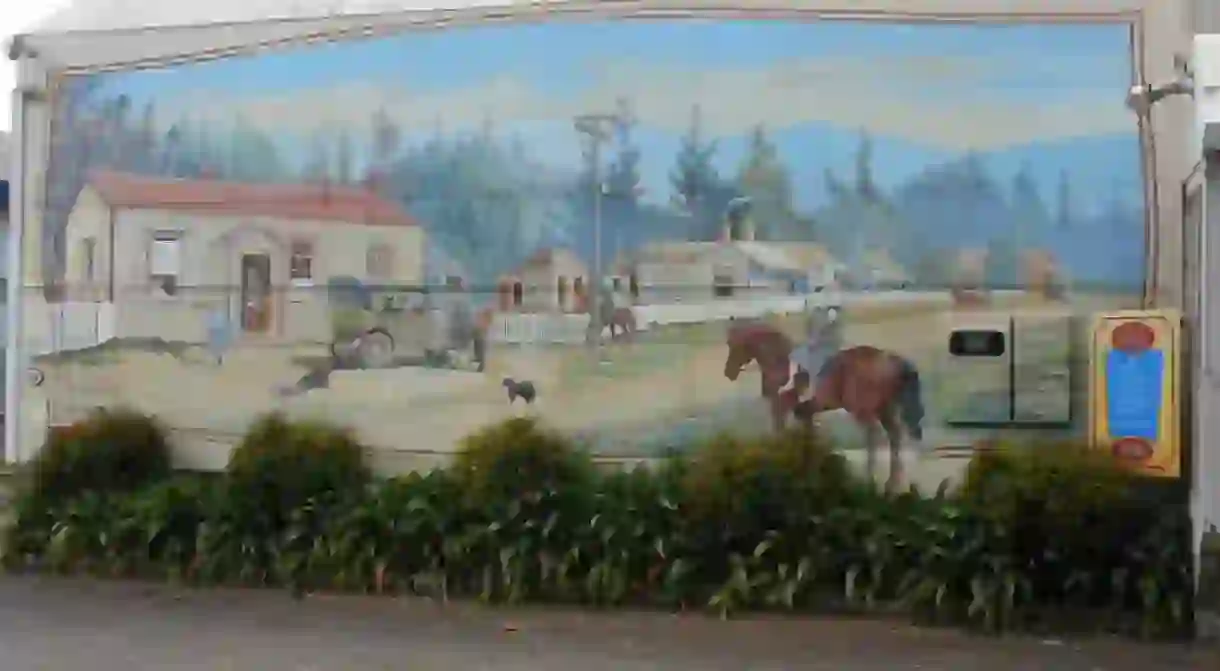How Katikati Became New Zealand's Home of Mural Art

Before graffiti art took New Zealand by storm, the Bay of Plenty town of Katikati embraced the idea of capturing its historic roots through an open-air gallery. The creative feat, which began in the early 1990s, marked Katikati’s transition from a financially struggling township into the nation’s home of mural art. Here’s everything you need to know about this remarkable community initiative.
Setting the scene: Katikati before the murals
Katikati is located 35 kilometres (21.7 miles) northwest of Tauranga. It was one of New Zealand’s last planned settlements, and the only one in the country led by Northern Irish immigrants. George Vesey Stewart, who established the Protestant settlement in the 1870s, wanted the town at Te Kauri (aka, Kauri Point) to become a home for those who did not want to work in the rural lands – such as retiring military or civil officers coming from India. Instead, tenant farmers and wealthy Northern Irish immigrants were among the first to call Katikati home.

Throughout its history, the Katikati economy relied on dairy farming and kiwifruit yields. In the late 1990s, however, the town was struggling to make ends meet with these two sources of income. Kiwifruit growers endured four years of low returns, the dairy industry was in shambles and New Zealand’s 1988 share market crash had a dramatic impact on the livelihood of many orchards and local businesses.
Struggles like the those above inspired the community to think of new ways to attract people into the town, s omething that could showcase the local identity while bringing wider economic benefits to its residents.
Inspiration came to Katikati from the last place one could have ever imagined: a small logging town in Canada.
An artistic movement is born
The idea of a mural project originated from a Katikati resident Barbara Wolfenden, who previously visited the Vancouver Island town of Chemainus in British Columbia. The Canadian establishment was struggling to make ends meet in the 1980s, after its timber mill – the town’s primary source of income – closed down. Not long after, Chemainus set about painting its history along its walls. Ten years and 32 murals later, the township enjoyed a prosperous influx of activity, attracting more than 300,000 annual visitors and 82 new business ventures.

Wolfenden was only in Chemainus for an hour, but that was enough to leave a lasting impression. Chemainus’ success story was the catalyst to the establishment of the Katikati Open-Air Art Inc, the committee that set out to bring mural art into Katikati. Planning and fundraising for the project began in October 1990, drawing on historic and photographic archives to identify the best way to depict the town’s past.
The first four concept designs were approved in May 1992, and by 1996 Katikati already boasted 25 uniquely created murals.
New artistic milestones were reached in 1999. The town’s 30th mural – created by a local high school student who, to date, is still the youngest contributor to this project – was unveiled.
Murals weren’t the only art coming to the area. A new sculpture eventually made its way to the middle of town. Affectionately know as ‘Barry’, it is now one of the most photographed pieces of public art in Katikati.

The art of Katikati in present times
The town’s artistic acumen continued to grow into the 2000s and is still flourishing today.
In 2000, Katikati celebrated its 125th anniversary of European settlement with the unveiling of its Our People, Our Story mural. That same year, the town’s iconic Haiku Pathway was also inaugurated.
The Haiku Pathway was livened up in January 2002 with Kaitikati’s first Open-Air Concert. Later, June Carlton – one of the Katikati Open-Air Art Inc’s driving forces – was awarded a Queen Service’s Medal (QSM) for her services to the community in New Zealand’s 2002 New Year’s Honours List.
The town also held the first New Zealand Mural and Arts Festival in 2006. A second installment followed in 2008; a third was hosted in 2011.
Nowadays, Katikati is home to 66 different murals, plus a number of different sculptures and open-air artworks scattered across its town centre.














